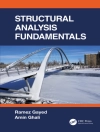Books about construction contracts tend to be dense and
wordy, but what most architects, quantity surveyors, project
managers, builders and employers are looking for is an easily
navigable, simple guide to using a contract, written in plain
language.
The JCT Standard Building Contract 2011 is an
uncomplicated book about a complex and commonly used contract. It
straightforwardly and concisely sets out exactly what the contract
requires in various circumstances, as far as possible without legal
jargon and without assuming any particular legal or contractual
expertise from the reader. It explains, often from first
principles, exactly what is meant by a contract and why certain
clauses, such as extension of time clauses or liquidated damages
clauses are present and more importantly, what they mean. The book
is divided into many chapters, each with many sub-headings, to make
it easy to read and to help readers to find relevant explanations
quickly. Tables and flowcharts are used to ensure clarity and most
chapters include a section dealing with common problems.
* Covers the recently issued JCT Standard Building Contract
2011
* Straightforward, concise, and as far as possible free of legal
jargon
* Sets out exactly what the contract requires in various
circumstances
* Includes many tables and flowcharts to ensure clarity
लेखक के बारे में
David Chappell BA(Hons Arch), MA(Arch), MA(Law), Ph D, RIBA
has 50 years of experience in the construction industry. David has
worked as an architect in the public and private sectors, as a
contracts administrator, as a lecturer in construction law and
contracts procedure and as a construction contracts consultant. He
was Professor of Architectural Practice and Management Research at
The Queen’s University of Belfast and Visiting Professor of
Practice Management and Law at the University of Central England in
Birmingham. The
author of many books for the construction industry, he is Director
of David Chappell Consultancy Limited, is a specialist advisor to
the RIBA and RSUA and regularly acts as an adjudicator.












